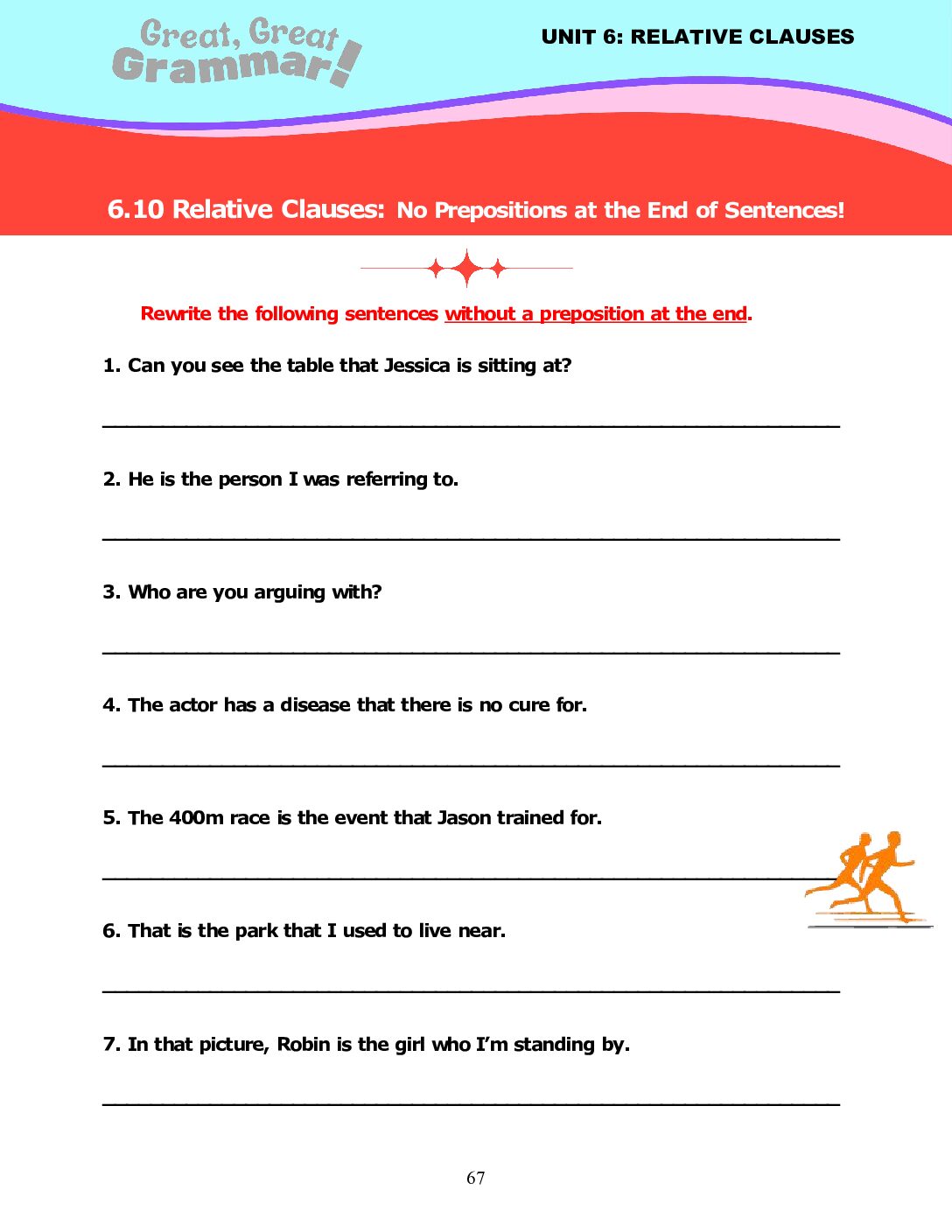In this ESL grammar lesson, students practice writing sentences without a preposition at the end.
ESL Grammar: Avoiding Prepositions at the End of Sentences
In formal English, it’s often recommended to avoid ending sentences with prepositions. A preposition is a word that shows the relationship between a noun (or pronoun) and other parts of the sentence. Examples include “in,” “on,” “at,” “by,” and “with.”
Why Avoid Ending Sentences with Prepositions?
- Formality: Ending sentences with prepositions can make your English sound informal or awkward, especially in written or formal contexts.
- Clarity: Avoiding ending sentences with prepositions helps make your sentences clearer and more precise.
How to Avoid Ending Sentences with Prepositions
- Rephrase the Sentence:
- Example:
- Original: There’s the book that I’m looking for.
- Rephrased: There’s the book for which I’m looking.
- Example:
- Move the Prepositional Phrase:
- Example:
- Original: This is the house I grew up in.
- Rephrased: This is the house in which I grew up.
- Example:
The English grammar lesson below reviews the use of relative clauses to avoid ending sentences with prepositions. Our series of ESL grammar lessons on subjects and verbs introduce these concepts and reinforce them through helpful and instructive exercises.
This lesson is available for free download, and you can download many more English grammar lessons focusing on advanced aspects of English grammar (past continuous tense, present perfect tense, present perfect continuous tense, passive voice, embedded questions, relative clauses) in our comprehensive, intermediate- to advanced-level ESL grammar textbook Great, Great Grammar! (Book 3: Tenses and More!).

